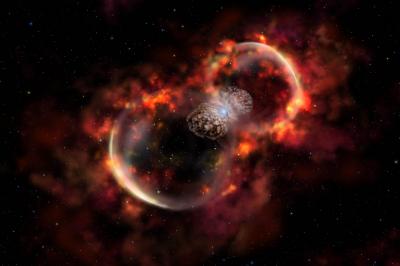[/caption]
The vast majority of stars out there are tiny red dwarfs, then come the solar mass stars like our Sun. There are giant stars and even supergiant stars. But the biggest stars out there are the monstrous hypergiant stars, which pump out millions of times more energy than the Sun. So just how big and powerful are hypergiant stars?
First, let’s take a look at a regular star like our Sun. Our Sun is the baseline, with 1 solar mass, and 1 solar diameter. It puts out 1 solar amount of luminosity. An example giant star would be Rigel, with 17 times the mass of the Sun. It’s putting out about 66,000 times as much energy as the Sun, and it’s estimated to have 62 times the radius of the Sun.
Next, let’s go bigger and look at a supergiant star: Betelgeuse. This familiar star is located in the constellation Orion, and has 20 times the mass of the Sun (1 solar mass = the mass of the Sun). Betelgeuse is estimated to be 1000 times the size of the Sun, and puts out 135,000 times as much energy.
Those stars are nothing compared to hypergiant stars. An example of a red hypergiant star is VY Canis Majoris, which measures 1,500 times the size of the Sun.
The true monsters of the Universe are the blue hypergiant stars, like Eta Carinae. It has 150 times the mass of the Sun, and measure up to 180 times the size of the Sun. Eta Carinae is putting out 4 million times as much energy as the Sun! Of course, Eta Carinae is a “live fast, die young” kind of star. It’s probably only been around for 3 million years or so, and astronomers think it’ll detonate as a supernova within 100,000 years.
We have written many articles about stars here on Universe Today. Here’s an article about the biggest star in the Universe, and here’s an article about Eta Carinae, which is expected to blow up any time now.
If you’d like more information on stars, check out Hubblesite’s News Releases about Stars, and here’s the stars and galaxies homepage.
We have recorded several episodes of Astronomy Cast about stars. Here are two that you might find helpful: Episode 12: Where Do Baby Stars Come From, and Episode 13: Where Do Stars Go When they Die?
References:
http://en.wikipedia.org/wiki/VY_Canis_Majoris
http://en.wikipedia.org/wiki/Rigel
http://imagine.gsfc.nasa.gov/docs/ask_astro/answers/970616b.html
http://seds.org/messier/xtra/ngc/etacar.html

